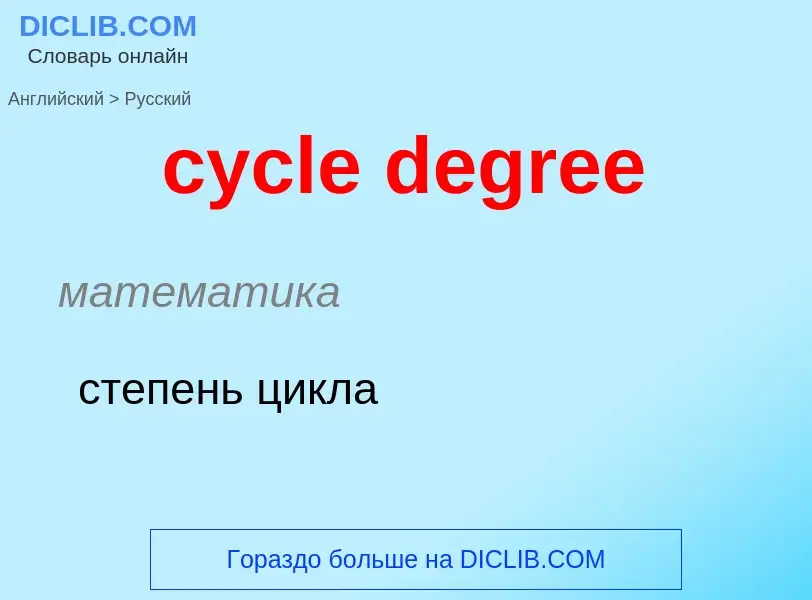Translation and analysis of words by ChatGPT artificial intelligence
On this page you can get a detailed analysis of a word or phrase, produced by the best artificial intelligence technology to date:
- how the word is used
- frequency of use
- it is used more often in oral or written speech
- word translation options
- usage examples (several phrases with translation)
- etymology
cycle degree - translation to russian
математика
степень цикла
общая лексика
(угловой) градус
математика
чётная степень
Definition
Wikipedia
A degree day is a measure of heating or cooling. Total degree days from an appropriate starting date are used to plan the planting of crops and management of pests and pest control timing. Weekly or monthly degree-day figures may also be used within an energy monitoring and targeting scheme to monitor the heating and cooling costs of climate controlled buildings, while annual figures can be used for estimating future costs.
A degree day is computed as the integral of a function of time that generally varies with temperature. The function is truncated to upper and lower limits that vary by organism, or to limits that are appropriate for climate control. The function can be estimated or measured by one of the following methods, in each case by reference to a chosen base temperature:
- Frequent measurements and continuously integrating the temperature deficit or excess;
- Treating each day's temperature profile as a sine wave with amplitude equal to the day's temperature variation, measured from max and min, and totalling the daily results;
- As above, but calculating the daily difference between mean temperature and base temperature;
- As previous, but with modified formulae on days when the max and min straddle the base temperature.
A zero degree-day in energy monitoring and targeting is when either heating or cooling consumption is at a minimum, which is useful with power utility companies in predicting seasonal low points in energy demand.
Degree days are a useful metric for estimating energy consumption required for household heating and cooling, and in this context are formally referred to as heating degree days. Since the escape or ingress of heat due to conduction is proportional to the difference between the indoor and outdoor temperature, the amount of energy needed to maintain the base temperature indoors for some period of time is roughly proportional to the number of degree days. For example, if the base temperature is 18 °C (64 °F) and the outdoor temperature is constant at 10 °C (50 °F) for one day, this counts as 8 degree days (14 degree days in Fahrenheit). Note that the base temperature used for these calculations is 2–3 °C (3.6–5.4 °F) lower than a typical indoor temperature setting, since a building will naturally be slightly warmer than the surrounding air due to body heat of its occupants and absorption of solar radiation.


